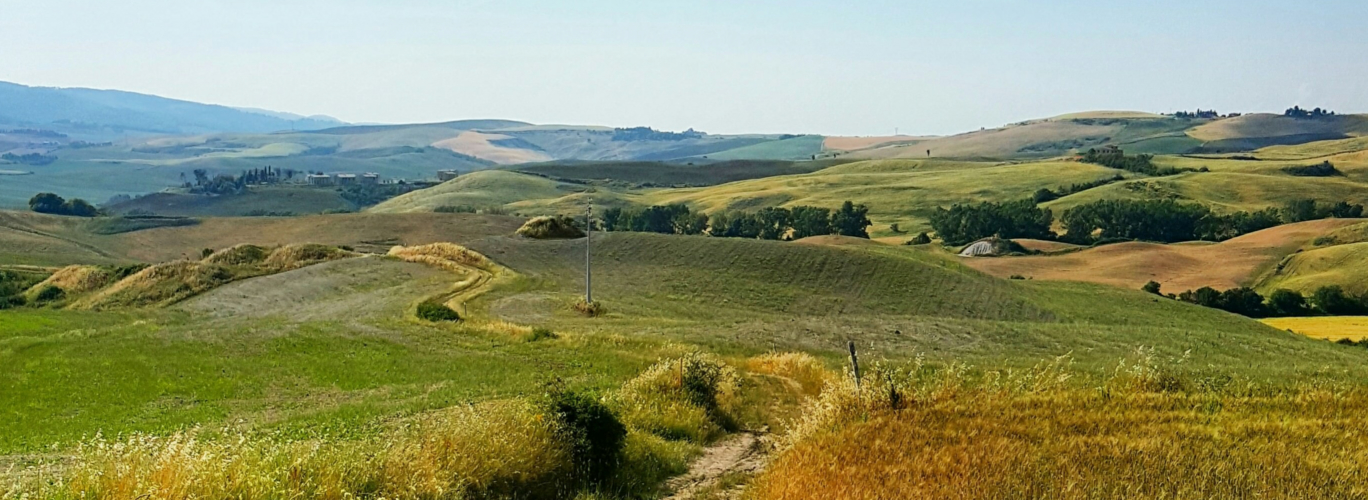The Project
We live in a historical period in which the world seems to rapidly shatter, and what should naturally be connected is breaking: man and nature, tradition and innovation, old and young generations, earth and cosmos. Man tends to get lost in particularism losing sight of the whole. The ancient bridge “Sega Fenu” on the Rio Mannu, gave the cue for the name of the Pontis initiative: a real bridge to rebuild, but also many bridges, many bonds and relationships to be recovered, to be valued, to be actively created . Pontis was born to do this by promoting a series of cultural, social and economic initiatives.
In practical of the projects
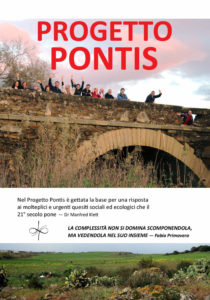
What the Pontis Project is
The Pontis project envisages the creation of a biodynamic farm and the recovery of the ancient Sedda-Mastio house in its entirety. The house and the company will be the two poles that will unite the agricultural activities (production, processing and sale), together with experimentation and training, with social inclusion, well-being, rehabilitation and care. The activation of other initiatives in the pedagogical, artistic and cultural fields, starting from the interaction of these areas, will give the whole of the offers of the project an added value that will make it unique in its kind. If on the one hand the innovative multi-functional farm sees the animal and vegetable productions harmoniously inserted in the landscape and in the processes of environmental protection, on the other for the Sedda-Mastio compendium the project proposes the work of preserving the architectural history of the building , to bring it back – as much as possible – to the uses related to agricultural activity but above all to cultural, artistic and social services at the service of the community. The unitary work of the Pontis Project is therefore to enhance the quality of local agricultural production and boost consumption by creating a virtuous economic circuit of great impact on the territory, but also to play an active and subsidiary role in the institutions in addressing the needs of the community. starting from one’s own history and enhancing local resources.
How the project proceeds
An essential step for the development of the project will be the retrieval of the financial resources (donation) necessary for the creation of a non-profit organization that acquires the title to be able to dispose of the properties (properties or other legal titles) and be guarantor in the maintenance of the original intended use. Organization that acts as an aggregator of the managing companies of the various areas of intervention according to a regulation that it has elaborated and carries out actions to identify and link the various funding channels. As an anticipator of this path, the association has carried out a preliminary work of study and preliminary design of the project. In this phase, technical skills in the agricultural, architectural and financial fields have intervened. This work made it possible to draw up a first cost analysis and the creation of professional documents to be used in the research and identification of funding channels and in the construction of partnerships with other subjects (public or private, Italian or foreign). With this work the construction of a strong and indispensable network of relationships and support has begun.
To facilitate the start up, small sample projects are being developed so that they can act as a pioneer for the general project, thus configuring a modular development of the entire project. A request for financial support has been already presented for one of these projects to a big German foundation meeting an interest in possible co-financing operations.
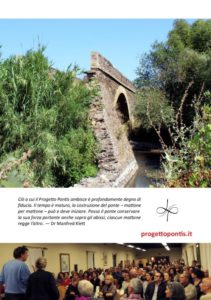
Two scenarios - two fields of action of the Pontis Project
The company land of Su Tistivillu and Monte Assorgia for one kilometer touched by the Riu Mannu
IN CAMPAIGN – Innovative Farm
the biodynamic company will be born with its initiatives:
- The reconversion of land conducted for decades with the conventional method;
- The re-naturation of abandoned and unproductive hilly terrain, with reforestation and increase of herbaceous vegetation on all sides;
- The production of cereals, legumes, fruits, vegetables, medicinal plants, forage plants and leguminous plants, irrigated and dry meadows, oil seeds and fiber plants;
- The animal breeding and the safeguard of some Sardinian biodiversity (black sheep of Arbus, wild ponies of the Giara, Sardinian donkey, Sardinian partridge);
- The closure of the supply chain with the transformation of plant and animal production;
- Research, training and dissemination in both biodynamic and biological fields, and in the field of green building;
- The planning and the building, in green building, of the buildings for agricultural, residential use, used for breeding and as a support to agriculture in his social and communal aspects;
- The realization of an agri-nursery and agri-kindergarten.
- Reception of school children, educational farm
- Protected work
On the other side of the river, the “Casa Sedda / Mastio”, part of the historic center of the municipality of Ussana
IN THE VILLAGE – Functional Recovery of dismissed Architectural Heritage
“CASA SEDDA / MASTIO” will return to its role as a link between the urban environment and the countryside, hosting initiatives and activities such as:
- The design and renovation of the cob buildings, with the transformation of the spaces according to the setting up of a part of the productive activities;
- The revaluation of the artisanal techniques related to sustainable construction and the formation of new professions or the redevelopment of those existing in the territory;
- The creation of a company sales point;
- The creation of a refreshment area, a company canteen and zero-km kitchen;
- The closure of the wheat supply chain with the transformation into various bakery products such as traditional bread and cakes;
- Protected inclusion of weak categories in craft and artistic production cycles;
- The transformation and the packaging of part of the bees production, the herbs production, and the fruit and vegetable holding’s productions;
- The organization of the distribution of agricultural products to the canteens of the territory, to the purchasing groups and to the local urban markets;
- The realization of public spaces for social, artistic, craft, music, and guesthouse activities;
- The creation of a Waldorf school from the first to the eight class.
The Place
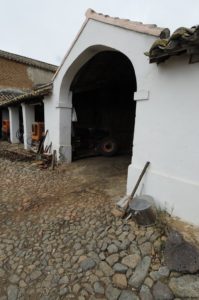
Peter Handke,
Singing at the time
“The duration has to do with the years
with the decades, with the time of our life.
here is the duration is the feeling of living. “
The first time you come into contact with the places described below, you perceive the fleeting, but powerful and profound sensation of the “duration”. This sense of time and of life, of the time that lives and of living the time.
The places in the countryside
The farmlands
The plots of farmland found/chosen before belonged to Sedda company , but with the agricultural reform of the fifties a large part was given to small farmers. They are close to the Riu Mannu which marks a boundary, they include in the East the hilly part of “Monti Assroxia”, ending to the west in the gentle slopes of “Su Tistivillu”, in the Agro of Monastir. At the center the ruin of the bridge “Sega fenu” (Su ponti Becciu).
The total area amounts to one hundred and fifty hectares, of which only 61 are to be considered productive, cultivated for decades with the conventional method mainly for sowing and forage, and partly to grow vegetables, vineyard and olives; the remaining surface, hilly and with a low thickness of land has been uncultivated for several decades, covered by repeated fires and has no arboreal vegetation, apart from a few perches and scattered spots of olive trees.
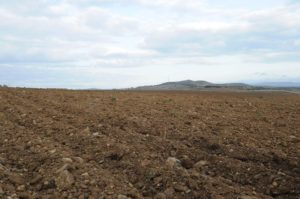
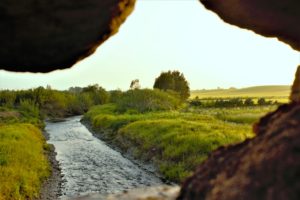
The river
In the territory of the municipality of Ussana the perennial waters of the Rio Mannu flow, the river is only a few cultivated fields away from the first houses. It serves as a boundary to the chosen lands and plays an important role in maintaining biodiversity and in keeping the balance between the natural elements indispensable for biodynamic agriculture.
The bridge
Sisinnio, the son of Demetrius Sedda, the great landowner of Ussana, when he was mayor of the town, had a bridge built in the agricultural area called Croccoriga which, after some years, in 1892, partly collapsed due to the overflow of the Mannu river. On the opposite bank we find vast soils that previously were of the same property and this bridge is said to have been built to allow cattle to cross the river. This bridge inspired the name of the project and of the Pontis association.
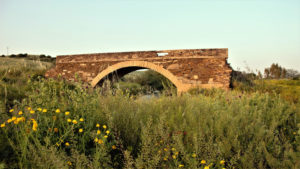
The places in the village
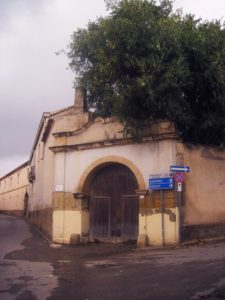
The ancient Campidanese Manor House
In the heart of the village of Ussana we find the ancient building known as the Sedda-Mastio compendium. It was precisely the family of Demetrius Sedda, who in the past had enormous economic and social power, to have this big campidanese manor house built in 1820.
From that time till today this building has seen and lived whole generations of families linked to the ussanese agricultural and cultural life, where there were also little known episodes of Sardinian and Italian history, and other human and political events from 1800 until the end of the second World War.
In order not to lose the identity character of this compound, it is necessary to intervene urgently to prevent an accelerated process of degradation in progress that is definitively compromising the recovery of the asset.
The recovery proposal provides a sustainable architectural approach aiming at socialization, encouraging the participation of local workers using natural materials in accordance to the traditions.
